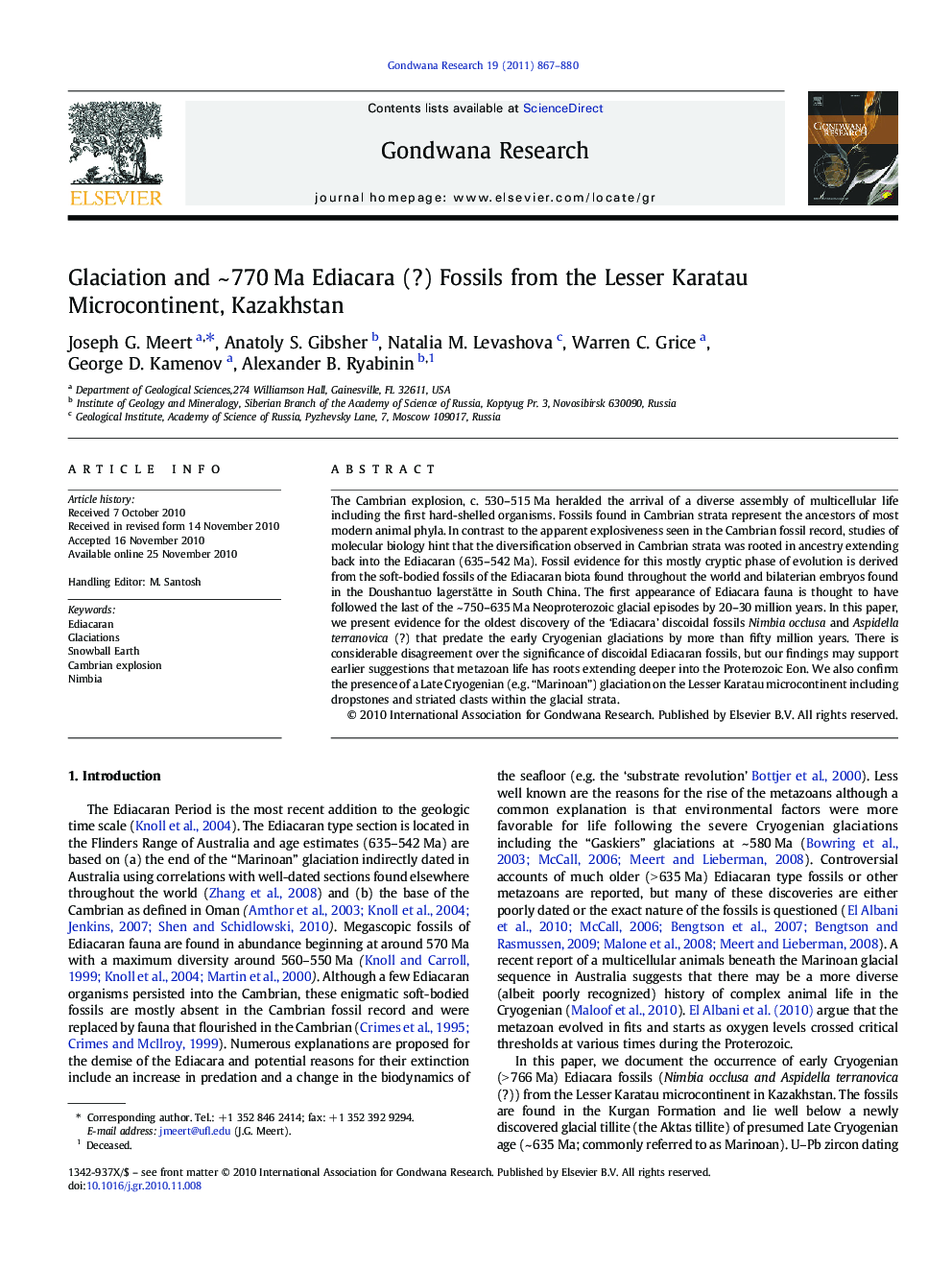| Article ID | Journal | Published Year | Pages | File Type |
|---|---|---|---|---|
| 4727663 | Gondwana Research | 2011 | 14 Pages |
The Cambrian explosion, c. 530–515 Ma heralded the arrival of a diverse assembly of multicellular life including the first hard-shelled organisms. Fossils found in Cambrian strata represent the ancestors of most modern animal phyla. In contrast to the apparent explosiveness seen in the Cambrian fossil record, studies of molecular biology hint that the diversification observed in Cambrian strata was rooted in ancestry extending back into the Ediacaran (635–542 Ma). Fossil evidence for this mostly cryptic phase of evolution is derived from the soft-bodied fossils of the Ediacaran biota found throughout the world and bilaterian embryos found in the Doushantuo lagerstätte in South China. The first appearance of Ediacara fauna is thought to have followed the last of the ~ 750–635 Ma Neoproterozoic glacial episodes by 20–30 million years. In this paper, we present evidence for the oldest discovery of the ‘Ediacara’ discoidal fossils Nimbia occlusa and Aspidella terranovica (?) that predate the early Cryogenian glaciations by more than fifty million years. There is considerable disagreement over the significance of discoidal Ediacaran fossils, but our findings may support earlier suggestions that metazoan life has roots extending deeper into the Proterozoic Eon. We also confirm the presence of a Late Cryogenian (e.g. “Marinoan”) glaciation on the Lesser Karatau microcontinent including dropstones and striated clasts within the glacial strata.
Graphical AbstractFigure optionsDownload full-size imageDownload as PowerPoint slideResearch Highlights►Late Cryogenian glaciation documented at Lesser Karatau, Kazakhstan. ►Ediacara-like discoidal fossils found in a ~ 770 Ma siliclastic bed below the glacial. ►Ages of volcanic sequences on microcontinents in Central Asia supports correlation.
